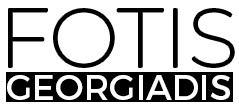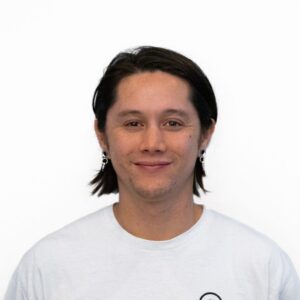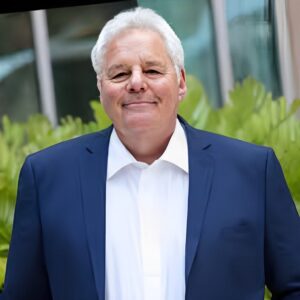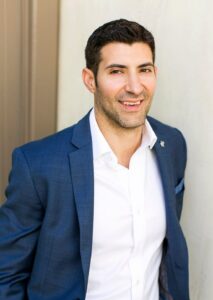An Interview With Fotis Georgiadis
Learn and practice as much as you can. My personal mantra is: There’s Nothing You Can’t Learn. This is what helped me pivot my career.
The Virtual Reality, Augmented Reality & Mixed Reality Industries are so exciting. What is coming around the corner? How will these improve our lives? What are the concerns we should keep an eye out for? Aside from entertainment, how can VR or AR help work or other parts of life? To address this, we had the pleasure of interviewing Helena Dong.
Helena Dong is a designer and creative technologist based in NYC, interweaving conceptual undercurrents from fashion, performance and AR. Since engaging with creative tech in 2020, Helena has designed, developed and directed AR experiences for a multitude of distinguished brands, including A24, Coachella, Estée Lauder, Meta, Nike, Prada and Vogue. Currently, Helena is an Art Director at BUCK where she collaborates with a global team on experiential projects driven by immersive technologies.
Thank you so much for doing this with us! Before we dig in, our readers would like to get to know you a bit. Can you tell us a bit about your backstory and how you grew up?
I spent my childhood in China before immigrating to Australia at the age of eleven. As early as I could remember, I was soaking up my mom’s creativity: I observed her as a florist and later an event stylist, often digging through her books on ikebana whilst toying with Barbie dolls and anime figurines.
After we moved to Australia, my obsession shifted to fashion and internet flash games, which evolved into a fascination with the experiential and performative potential of clothing. This curiosity sustained me through university, where I studied fashion design through an interdisciplinary lens. It also encouraged me to specialize in creative technology in recent years, and now I get to combine these worlds through working on AR effects for brands like Fendi, Prada, and Nike.
Is there a particular book, film, or podcast that made a significant impact on you? Can you share a story or explain why it resonated with you so much?
One of the biggest impacts is thanks to the Viktor & Rolf SS09 show. At the time of encountering this digital performance, I was in grade six and my interest in fashion was just developing. As you can imagine, I was fully mesmerized by clones of Shalom Harlow walking down a CGI runway, and this was thirteen years before Balenciaga’s SS22 ‘Clone’ collection! This was one of my earliest memories of a virtual fashion show, and it radically expanded my perception as a twelve year old, on how designs could be experienced and disseminated beyond traditional formats.
Is there a particular story that inspired you to pursue a career in the X Reality industry? We’d love to hear it.
I began exploring AR out of sheer curiosity after moving to NYC for an opportunity in fashion. Despite having no background in computing, I downloaded Spark AR upon noticing a rapid surge of Instagram AR effects published by independent creators. Initially, I saw AR as a viable tool for prototyping designs that would otherwise be constrained by cost and manufacturing feasibility. I never imagined it would become an alternate career trajectory. The first wave of COVID lockdowns in 2020 called for introspection, and I dove deeper into AR development and 3D modeling. The act of learning brought me immense joy in that moment. I was playing with these tools purely for personal reasons, until I was commissioned to work on American Vogue’s first AR-enhanced beauty editorial for the iconic September Issue of 2020.
Can you share the most interesting story that happened to you since you began this fascinating career?
The fact that I get to play in the world of AR as a career still feels ridiculous to me. The most interesting story has been the journey itself, and this process of learning on the go. Oftentimes, I take on projects beyond my capability. With impending deadlines and client expectations, I need to learn whatever skill or tool required to realize the project. And for some miraculous reason I’ve always managed to pull them off. Many brands that I once dreamed of working with while I was in fashion school have become my clients, such as Prada, Fendi, Nike, Byredo, and Vogue. This is something that has surprised me, how my career path has changed within two years, simply by starting with watching online tutorials and experimenting.
Can you share a story about the funniest mistake you made when you were first starting? Can you tell us what lesson you learned from that?
When I first decided to pivot to creative tech, I reached out to over 200 creative studios over a period of 6 months. I wanted to learn from leaders in the field, see if I could collaborate with their team, and get some advice on whether I could actually make a career out of AR. This process was so beneficial, and I am grateful to every person who spent time with me helping me understand this space.
Before you embark on this process, be clear about your goals, and have your case studies and work samples ready to be presented. Looking back, I wish I had been a bit more prepared as there were times where I fumbled with my phone to find relevant examples during the call.
None of us are able to achieve success without some help along the way. Is there a particular person who you are grateful towards who helped get you to where you are? Can you share a story about that?
Of course, I am very grateful to all the people who have encouraged me along my journey, but it would be impossible to name only one person! I’d really like to give a shout out to my generous and talented colleagues at BUCK as well as fellow creators and mentors in the Meta Spark community, who have taught me so much over the past few years and fostered my confidence to build a career in creative technology.
Are you working on any exciting new projects now? How do you think that will help people?
There are many new AR projects I am working on in various stages of completion and although I can’t share any specifics just yet, I can’t wait for the world to experience them. Keep an eye on the @BUCK_Design Instagram account for the latest 😉
Ok super. Thank you for all that. Let’s now shift to the main focus of our interview. The VR, AR and MR industries seem so exciting right now. What are the 3 things in particular that most excite you about the industry? Can you explain or give an example?
There are three things that excite me about this space:
- How by using VR, AR and MR, we can transcend physical limitations and cheat space. My inner child is thrilled by the prospect of an Anywhere Door or the Deluxe Light from Doraemon that comically transforms everyday objects into deluxe versions of themselves. Existing objects acquire new and various connotations as they’re prescribed with alternative contexts.
- The endless immersion of a narrative. With the integration of deep learning models, the stories in AR, VR or MR experiences could be shaped entirely by the audience. Choose-your-own-adventure narratives no longer need to be limited by pre-destined plotlines.
- The ongoing improvements in hardware capacity and the eventual elevation of visual fidelity so that people can stop associating AR/VR with a low-fi aesthetic.
Are there other ways that VR, AR and MR can improve our lives? Can you explain?
VR, AR and MR bear immense potential to enrich the ways in which we perceive and interact with the world, particularly with heightened convenience, immersive education and expansive leisure. Having said that, these improvements won’t derive from technology alone, they will only be made possible through practices that are inclusive, design-centric, and are able to evolve with our values. Only time will tell just how these technologies will integrate with different lifestyles and abilities. I’m excited to see what comes next and be part of the developments.
What are the “myths” that you would like to dispel about working in your industry? Can you explain what you mean?
There is a myth that being excited about VR, AR and MR experiences equates to abandoning the “real world.” The fact is that VR, AR and MR experiences exist in the real world: our world. This conversation that we’re having about the expansion of these experiences is really no different from the one we instigated over a decade ago with the rise of the internet and social media, contesting just how much of social media and the use of 2D interface on a pocket device would dictate our day or day lives. It’s a different, and more integrated way of interacting with content and participating with digital communities, which is probably why it feels like a bigger threat to our existing way of life.
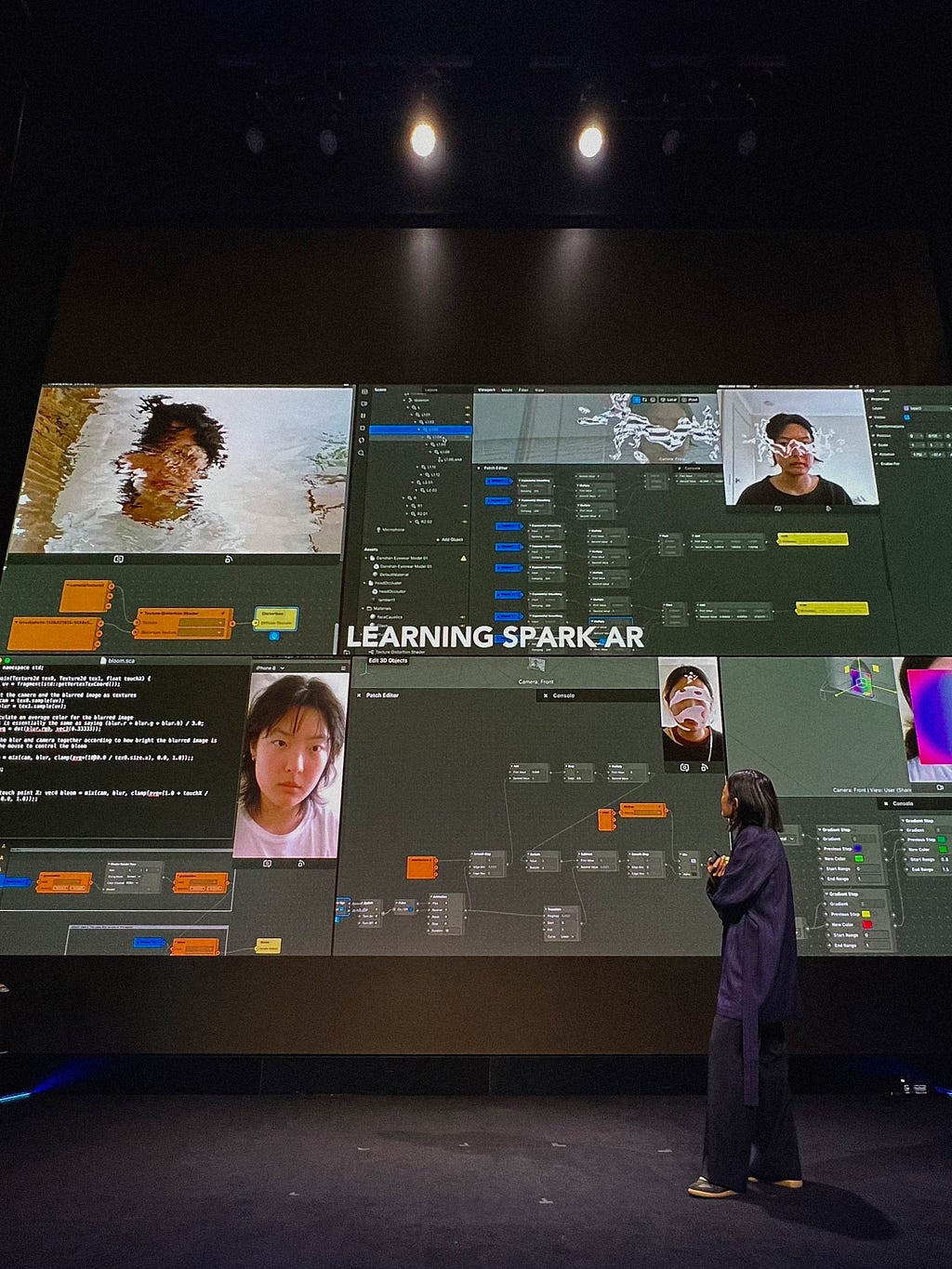
What are your “5 Things You Need To Create A Highly Successful Career In The VR, AR or MR Industries?”
Keeping in mind, I am new(ish) to this field myself, here are some things that I share when asked about working in the world of AR:
- Foster your curiosity. Everything in creative technology moves fast, new things are constantly being introduced. The only way to sustain a career in emerging tech is to be curious and inspired by the unfamiliar.
- Learn and practice as much as you can. My personal mantra is: There’s Nothing You Can’t Learn. This is what helped me pivot my career.
- Have clear intentions. Don’t build tech for the sake of it. Think about what drives you to create VR, AR, or MR experiences. Ensure that your work, and that of your collaborators is backed by genuine and clear intentions. VR, AR and MR are tools that have no agenda on their own. So, what is your agenda?
- Project your ideas, your intentions, your art, and your capabilities in front of key stakeholders. Be patient and prepared to explain your stance and educate others who are unacquainted with these technologies.
- Teamwork. Understand that you don’t have to do everything on your own. AR experiences require a multitude of inputs: not only technical capabilities, but design theories, psychology, scenography, narratives, and more. As a creative technologist specializing in social AR, there’s often a perceived need to be your own creative director, designer, 3D artist, developer and producer. While it certainly helps to know a bit about everything, it’s not practical to expect yourself, or anyone, to master all tasks. Know that it is ok to seek support and collaborators.
You are a person of great influence. If you could inspire a movement that would bring the most amount of good to the most amount of people, what would that be? You never know what your idea can trigger. 🙂
Eliminate traces of gatekeeping mentality. Everyone in the industry should be willing to offer mentorships.
Thank you so much for these excellent stories and insights. We wish you continued success in your great work!
Makers of The Metaverse: Helena Dong On The Future Of The VR, AR & Mixed Reality Industries was originally published in Authority Magazine on Medium, where people are continuing the conversation by highlighting and responding to this story.
